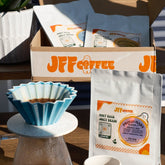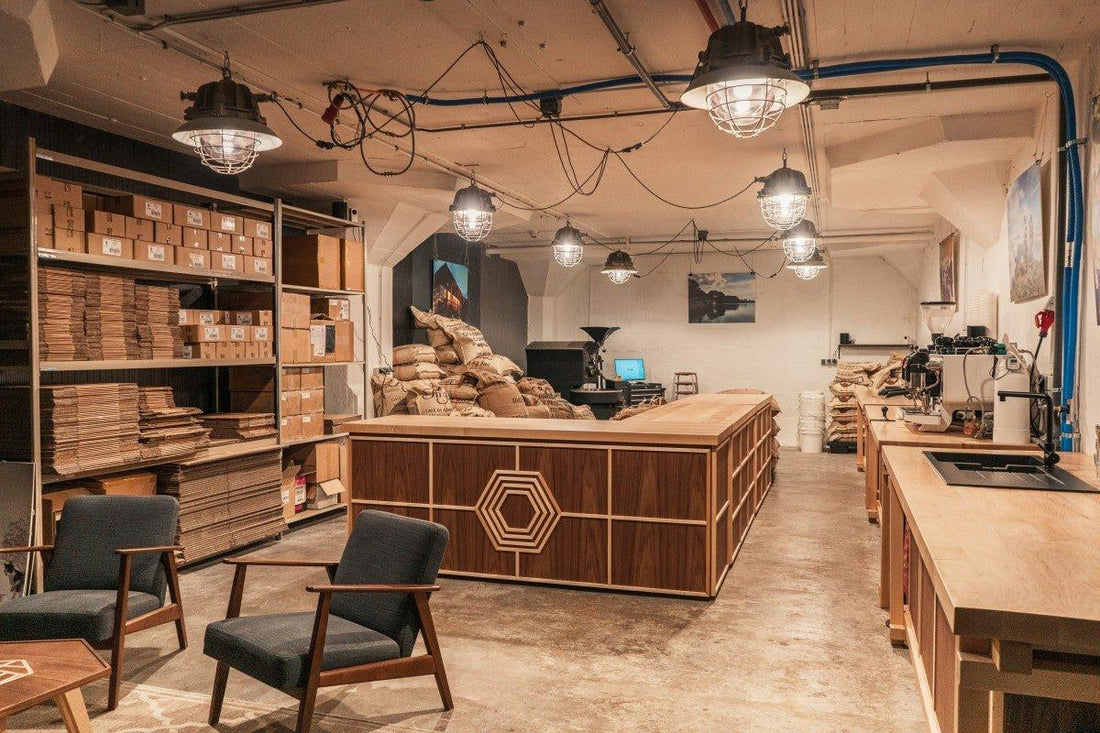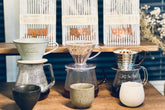Ah, Shokunin! (職人, しょくにん)
For us Asians, the name strikes a chord. It’s synonymous with high-quality craftsmanship and the relentless pursuit of perfection—a concept deeply respected in Japan. It’s not just about being good at what you do; it’s about pouring your heart into it and lifting up those around you. Pretty inspiring, right?
Shokunin Coffee hails from Rotterdam and was founded by Jelle van Rossum, who kicked things off at just 24 years old—talk about ambition! Our first trip to Rotterdam in 2024 wasn’t just for the stunning architecture; thanks to a friend’s tip, we found ourselves at Dune Cafe, sipping on coffee made with Shokunin beans. Let’s just say it was love at first sip.
Naturally, we reached out to Jelle to explore a partnership, but his first question floored us. He didn’t ask about the minimum order quantity—he wanted to know the Maximum! Why? Because he’s all about keeping absolute control over the quality of his beans and won’t take on orders he can’t handle perfectly.
That kind of dedication is rare and totally captures the spirit of Shokunin—mastery, passion, and respect for the craft. We’re so excited to bring his beans to you!
Marumi coffee: Our Sweet Coffee Experiment
Marumi from Shokunin is a washed Kenyan coffee that promises a sparkling clarity and vibrant fruit-forward profile. We set out to see how its complexity shines using a high-extraction filter method, here’s how the experiment went.
What We Used:
18g of Marumi coffee
300ml of filtered water heated to 98°C
Step 1: The Bloom
We started with a 40-second bloom, pouring exactly 45g of water over the coffee grounds. Watching the coffee bloom is like waking the coffee up, ready to release its full potential.
Step 2: The Sweet Spot
At 0:40, we slowly poured in circular motions until we hit 200g (two-thirds of the total water). This took about 40 seconds, and we tried to keep it as steady as possible. After that, a gentle swirl flattened the coffee bed, making everything nice and even.
Step 3: The Finale
At 1:50, we poured the remaining 100g of water, again in slow, controlled circles. This final pour was all about precision, finishing at 2:20. Another swirl, and then we let the coffee drain completely. By 3:50, the coffee bed was flat and dry, and the experiment was done.
The Result
Marumi delivered a pristine and vibrant cup that exceeded expectations.
- Aromas: Bright and floral with hints of jasmine and bergamot.
- Flavour: A crisp sweetness of blackcurrant and pink grapefruit, balanced with a clean, tea-like quality.
- Body: Silky and light, with a sparkling acidity that dances on the palate.
This high-extraction method highlighted Marumi’s clarity and complexity beautifully, offering a cup that feels both elegant and exciting. For anyone looking to experience the full potential of this Kenyan gem, this recipe is a must-try.








